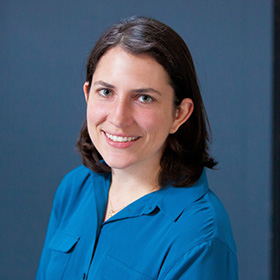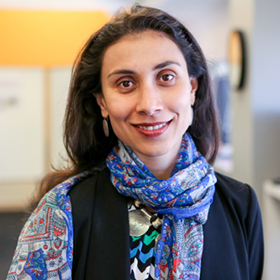(This article originally appeared on the Stanford Social Innovation Review website, May 26, 2017.)
There are currently more than 1.5 million nonprofits in the United States. One important type is the field-building intermediary, which engages and coordinates nonprofits, funders, and other stakeholders to deal with critical, unaddressed needs in a field, such as building partnerships or sharing best practices. While these organizations can create transformative impact at a systems level, they require thoughtful consideration, especially from funders, who play a pivotal role during concept development and early-stage growth.
Examples include Gavi, a global vaccine alliance that received major initial funding from the Bill & Melinda Gates Foundation; Freedom to Marry, which the Evelyn & Walter Haas, Jr. Fund seeded and which played an important role in achieving marriage equality across the United States; and Achieving the Dream, which the Lumina Foundation started to help students succeed in community college.
Another example is the Global Impact Investing Network (GIIN), created with support from The Rockefeller Foundation. In an effort to leverage new sources of capital to address social and environmental challenges, the foundation convened a small group of leaders in 2007 to think about how to advance impact investing. Two years later, after engaging with dozens of investors and development practitioners from around the globe, it backed the creation of GIIN to serve as a nonprofit network of leading impact investors. Since then, GIIN has helped define the concept of impact investing and has been integral to building the core impact investing infrastructure, including the Impact Reporting and Investment Standards (IRIS) and ImpactBase, an online database of impact investment funds and products. GIIN also has drawn others into the space, including leading corporations, foundations, and nonprofit funds. All this helped lay the groundwork for the expansion of impact investing from $2.5 billion in 2010 to an estimated $12.2 billion in 2015.
Starting a new organization to build a field is a bold and difficult step, but more than a few donors have been willing to try. New analysis by The Bridgespan Group finds that among donors making “big bets” of $10 million or more to achieve social change goals, a significant number—representing approximately 14 percent of large gifts in Bridgespan’s database—use those bets to found a new organization. And a number of these are field-building intermediaries.
To explore this unique model, The Rockefeller Foundation funded research by Bridgespan to examine when donors have launched new field-building intermediaries to implement large-scale change. Extensive research and interviews with a range of funders, plus lessons from Rockefeller’s own experience, point to four important areas that funders should consider when starting a field-building intermediary: shared value proposition, leadership, operational capacity, and sustainability.
Creating a shared value proposition
Funders often start field-building work with a strong, sometimes insular point of view on what the solution should look like. But investing time to source ideas and secure buy-in from the others working on a specific social issue can increase an intermediary’s likelihood of success. For example, before the Bill & Melinda Gates Foundation helped launch Gavi, a working group of representatives from multilateral organizations, development agencies, NGOs, and universities spent two years learning from major actors across the disease prevention space about vaccine access in developing countries. The working group concluded that efforts to expand children’s access to vaccines had slowed for two reasons. First, policymakers were largely unaware of the huge potential health impact and cost effectiveness of introducing new vaccines in their countries. Second, governments that understood how powerful these vaccines could be were struggling to find donors, and pharmaceutical companies had limited incentives to invest in supplying vaccines in low-income countries. The field needed a new partnership that could connect public and private actors, leveraging their shared experience, expertise, and resources. With so many well-established players, a new organization had to identify a gap, not compete with existing organizations or muddle existing relationships. For Gavi, the added value proved significant: aligning the efforts of all actors in the immunization community to accelerate vaccine introduction and shape markets to make life-saving vaccines more accessible.
Seeding leadership at the right time
Don’t underestimate the importance and challenges of finding the right leaders and setting them up for success. Leadership characteristics required for a field-building intermediary usually include diplomacy, entrepreneurial management, and technical skills. Funders should also ensure that leaders can engage with and shape initial strategies so that they understand and take ownership of the program goals.
When considering candidates, funders should ask four questions:
- Is the field-builder aligned with the leader’s vision? The leader should see his or her own ideas reflected in the work to feel full ownership of the organization.
- Does the leader have a start-up mentality? The leader should be comfortable and passionate about building something new, not just running a program. This includes a high degree of comfort with ambiguity, as field-building organizations often aim to influence complex systems through uncertain and changing circumstances.
- Does the leader bring a robust set of relationships? A field-builder must work with, influence, and get buy-in from a range of groups and individuals, and its leader should have relationships in place to set up the organization for successful collaboration.
- Does the leader need to have a strong understanding of the field? When leaders have to work and align with existing actors, they must deeply understand the issues and complex dynamics affecting the field. But in cases where the field is nascent and diverse enough, it’s better to build a team that can bring the right mix of expertise to complement the leader’s knowledge.
Gavi’s first CEO, Tore Godal, for example, brought years of experience in global public health with the World Health Organization in Geneva. He was highly respected in the community, had existing relationships, and had played a central role in bringing Gavi to life, all of which led to his selection as CEO. It’s usually difficult to find a single candidate with strengths across all skill areas, so funders may need to prioritize strengths and determine whether a strong start-up CEO is also the right steady-state CEO to lead in the longer term.
Building operational capacity
While funders are generally excited to support worthwhile programmatic work, many have less experience and interest in supporting core operations. However, investment in building the organization is essential for successful implementation. Funders can help build operational capabilities through a combination of tapping into their own expertise, contracting external support, and investing in the entity’s ability to develop capabilities. At GIIN, for example, The Rockefeller Foundation used existing relationships with technical experts and funders, and funded outside support to bolster GIIN’s legal and research capacity (for example, Rockefeller Philanthropy Advisors served as a fiscal sponsor before it became an independent nonprofit). The foundation also invested in GIIN’s ability to develop its own talent and hiring processes, which contributed to a faster and more successful startup. And it supported capabilities in policy and government relations to help the organization work effectively with government agencies to accelerate the development of impact investing.
Planning for sustainability
New organizations are sometimes so closely associated with the founding donor that other funders may be reluctant to get involved. Founding donors may need to choose between maintaining their exclusive stamp on a new organization and inviting others to join. With GIIN, The Rockefeller Foundation took the lead in building much of the early infrastructure to ensure GIIN could thrive. But the foundation also nurtured relationships with other donors who have since provided significant support while the foundation has less direct involvement. For example, the UK’s Department for International Development committed almost $17 million in 2012 to support the network.
Creating a new field-builder can be expensive and time-consuming, and it may not be worth the effort if an existing nonprofit can advance a donor’s goals. But even when a need exists and no organization seems ready to address it, donors should proceed with caution. After the value proposition and leadership are in place, it can still take years to create the right operational capacity and sustainable funding structure. The reward for such demanding work, however, lies in the chance to accomplish ambitious goals.
These insights are drawn from a collaboration between The Rockefeller Foundation and The Bridgespan Group to examine four models for implementing initiatives for high impact. The models analyzed include starting a new entity, working with a core implementation partner, engaging in advocacy, and influencing the private sector. For in-depth insights and examples, see “Implementation Models – Synthesis of Findings.”




